Text
Week 14 – Your choice
1. What design related ideas/thoughts would you like to rant about?
I feel like this book should've included more architectural-related + interior home designs. I've seen some crazy homes and buildings but not much was mentioned.


Another thing is that I didn't see much of a minority representation or diversity among the designers in the book. They were either from Europe or America. There was some talk about Bi Sheng -- he created the movable type AND Johannes Gutenberg made the first printing press. This book is titled, Graphic Design A New History. There should've been topics that included the history of design in other countries. Such as African design and architecture for example.

2. What type of discussion would you like to start?
For a journal prompt, you should have one dedicated to finding things from your students' culture that implement design and art. And have them describe what makes the object both or either.
3. What questions do you still have regarding design vs. art ... if any? What cool item or product has captured your attention as a result of your new higher awareness of design in the world around you?
I like how this class stated that art and design are two completely different things. It was hard not to jump at saying "art" on the finals too. That was funny. From this class, I grew to look at everyday objects with a new perspective.
Oh yeah, tea cups have elements of design and art on them as well. If you're familiar with Asian grocery stores, they have sets of bowls, plates, spoons, cups, etc. that are functional but have an artistic appeal.

0 notes
Text
Week 13 – New Media
Please expand on the “digital aesthetic” as defined by your textbook and provide contemporary examples.
If you know me, I love visual aesthetic. It’s full of appeal and quite pleasing for the eye to look at. Digital Aesthetic is,” the sensual properties of and responses to artwork; also critical reflection on art and culture.” This can apply to practices of artists who specialize in digital media, visual arts, 3D work, etc.
Digital Art:
“Digital art, once called computer art or new media art, refers to art made using software, computers, or other electronic devices. Anything produced or made on digital media, such as animations, photographs, illustrations, videos, digital paintings, and such can be classified as digital art.”
There’s this debate whether or not digital art is “real” art. I view digital art as art with shortcuts. The media aspect is sort of like a medium. There are programs that mimic physical tools and art media. Brushes can look like graphite or even bleed like watercolors. I think digital art being “real” can be interpreted by someone’s own opinions. You’re neither wrong or right. Though, it is a form of art, people may not see it as actual art. Technically, anyone can create art. It’s more convenient for people to produce digital works. But learning how to use the tools and mastering it conveys an artist’s work. Especially if they’re quite passionate in what they do.
What is Digital Art used for?
Commercial settings. These include media advertisements and producing visual graphic effects and animations in films, video games, etc.
“The ease of publishing, sharing, and selling digital art has made many new jobs and careers available for digital artists all around the world. Digital art can also be used to create graphic designs.”
Increasingly, digital art is moving into the high art collector space. Crypto art has allowed many digital artists to sell their works for prices that were previously exclusive to traditional artworks.
- On a side note, NFT’s have stolen many artists’ work to make profits off of. It’s wrong and unjust. As someone who occasionally draws and create paintings, I don’t want my work to be stolen. Yes, it may sound strange. But listen...would you want someone profiting from your work?


- These were some of the work displayed on the blog I linked. I think it’s quite fascinating. Especially with the color, lighting, and multiple textures.
“VIDEO” GAME DESIGN
I LOVE video games. It’s been a part of my childhood. I had PlayStation consoles (2,3,4)...unfortunately too broke to get the PS5 and the games. Video game design is essentially the “process of generating an idea for a game and taking it all the way to a final, playable product.” Game design covers all sorts of games, including board, card, etc.
Game mechanics
Core game concept
Character design
Narrative and plot
Level design
These are some of the concepts and challenges you may come across as a game designer.
There’s a bunch of video game companies out there. You may recognize a few from this list below:
Nintendo
Valve Corporation
Rockstar Games
Activision Blizzard
Sony Computer Entertainment
Ubisoft
Naughty Dog Inc
Capcom
Mojang
Below is a bunch of pictures of my favorite video games.





*sigh* I’m AR 57 at the moment.


0 notes
Text
Week 12 – New Media
Please expand on the fields that have the greatest impact on
interactive design.
What is interactive design?
"Interaction design can be understood in simple (but not simplified) terms: it is the design of the interaction between users and products. Most often when people talk about interaction design, the products tend to be software products like apps or websites.
The goal of interaction design is to create products that enable the user to achieve their objective(s) in the best way possible.
The 5 Dimensions of Interaction Design
Words
Visual Representations
Physical objects or space
Time
Behavior
Interactive designers may have separate jobs. There are UX designers as well as interaction designers. "In a large design team, there might be a UX researcher, an information architect, an interaction designer, and a visual designer, for instance."
"Interaction design is a process in which designers focus on creating engaging web interfaces with logical and thought out behaviors and actions. Successful interactive design uses technology and principles of good communication to create desired user experiences."
5 Main Principles:
Human/machine communication is the translation of conversations between the device and user.
Action/reaction looks at how interactions happen and unfold.
State ensures that users know what is happening and why in terms of the application.
Workflow ensures that users know who to use a tool or application and what happens next.
Malfunction takes into account mistakes that are bound to happen.
Let's say you're an interaction designer. What kind of stuff does this job entail? They're someone who works with development, design, creative and marketing team, and helps come up with prototypes, test concepts, and work with current trends + tech. Your job is to make sure digital applications work and function in the hands of users. There are plenty of career paths you can choose.
This blog talks about the benefits of pursing a career in UX Design.
"UX design is one of the top five in-demand skills according to a LinkedIn report. This is expected to continue in 2021 as UX becomes a Google ranking factor, meaning businesses will need to focus on their UX to remain competitive."
It also offers a higher range of salary. "According to Glassdoor’s ‘50 Best Jobs in America for 2020’ report, the median salary for a UX designer is $90,478. Whereas a UX designer in Sydney, Australia can expect to earn around $89,932." Aside from the pay, this job will give a great opportunity to make impactful relationships. If you're someone who likes computers and design, this career path will be a meaningful journey.
0 notes
Text
Week 11 – Graphic Design
Your reading this week references the Citizen Designer? What
does that mean? How is it relevant?
The Citizen Designer begins on page 431 and the assigned reading builds up to it.
"The idea of a responsible citizen designer may be traced back to one of the first artists discussed in this book, the British leader of the Arts and Crafts movement, William Morris. In the late nineteenth century, Morris asserted that high-quality design could serve as a beneficent social force to reform the ills of the industrial age." To be a responsible citizen designer, one must have an understanding as to what it entails. The book also mentions sustainability. And that it's a paramount concern. Aaris Sherin also voices that sustainability is "the balanced use of natural, social, and economical capital for the continued health of the planet and future generations". In a way, we should not be wasteful and take in consideration the amount of resources we have.
0 notes
Text
Week 10 – Graphic Design
Please expand upon some of the most interesting ideas from
your typographic readings.
From the Introduction: The Origins of Type and Typography from p. 12-23, starts the chapter by talking about graphic design came to be. Writing is a form of communication. It is a commonly known method for people to share their ideas, detail their thoughts, express creativity, etc. "Over 5,000 years, human beings began to communicate through writing, it started amid the Sumerian people of ancient Mesopotamia, who developed some of the earliest complex societies." From there, we have Egyptian hieroglyphs which "was a writing system developed in order to record trade, and was also readily adapted to celebrate deeds and pronouncements of rulers and deities." Hieroglyphs come from a Greek phrase and means "sacred carvings" -- as detailed on page 14. In 1822, French Egyptologist Jean-Francois Champollion managed to successfully deciphered the Rosetta Stone. Over the years, we establish the Phoenician alphabet, and various works of Latin.
The point is that various forms of languages came together to create a cohesive style that everyone can enjoy and learn. Forms of cursive grew from Celtic and Roman fonts. And currently, you can find multiple fonts installed within Google, all over the internet, or even crafting you own. Typography has been shaped from all sorts of cultures and places. It's actually surreal in a sense. And with different forms of typography, we are given a physical form of language.
Once you start adding pictures, you get a more visual aspect of typography. Of course, when accompanied with text, the result ends up with posters, propaganda, art, etc. The nineteenth century type details innovative ways people responded to the growth in the country and how typewriting sparked competition. As for graphic design, its growth came from advertising. Later on, we get the arts and crafts movement. It's pretty self explanatory, mostly because art is incorporated into typography and taking a form of graphic design. Like I mentioned earlier, propaganda was a way for people to communicate ideas. Especially during WWI and WWII. During this crucial time, people needed inspiration, hope that could reduce the panic and suffering.
I quite like digital typography but I can appreciate it in another form -- handwritten. I feel like writing it out yourself gives it a deeper and personal meaning. Which is why there is calligraphy. I've seen multiple videos of it but never really tried it out for myself. I don't have the best handwriting so it's interesting to come across people who can write the smoothest letters with a flick of the wrist. As technology continues to advance, the incorporation of digital makes the production of what used to be physical work, much more easier to replicate. But another thing is that it's easier to steal and make a profit from.
0 notes
Text
Week 9 – Industrial Design
After reading about Brooks Stevens, how does Milwaukee fit into
the history of Industrial Design? Why did Brook Stevens choose to stay in Milwaukee?
LINK FOR THE READING ON BROOK STEVENS
https://mam.org/collection/archives/brooks/
https://milwaukeerecord.com/city-life/old-milwaukee-brooks-stevens-wienermobiles-and-high-life/
*2nd article used for reference in first paragraph
During the Great Depression and World War II, "citizens were asked to save and buy war bonds, not fancy new products to make their lives more convenient." As a result, industrial designers were motivated to sell products with reinvented designs. Brook redesigned a military Jeep and made it into a car that appealed to Americans.

Once the war ended, his business soared. Markets were up and big companies such as Miller Brewing, Allen-Bradley, Outboard Marine Company, and Harley-Davidson became his clients. He also designed the Olympian Hiawatha -- the speedliner train that would service routes to and from Milwaukee, Chicago, Saint Paul, and the Pacific Ocean. He made a name for himself but also as the Industrial Designer from Milwaukee, he brought upon great accomplishments for the city.
Brook's father," William Clifford Stevens, pushed him to to pursue his childhood hobbies, especially when the future designer was struck down with a severe case of polio at the age of eight. [He] piled sketchpads and model kits next to the boy's bed and encouraged him to build one miniature airplane and boat after another." Based on the biography, you can understand that Brook was raised by a father who pushed him past his limits and motivated him. So much so, that perhaps he stayed in Milwaukee due to how "home" it feels. He also left Cornell University (he studied Architecture) in 1933 without a diploma and returned to Milwaukee for work. Brook later went to New York City where he looked up to various designers and planned to follow in their footsteps. However, he ended up returning to Milwaukee, claiming that it was where the business was. After exploring, I feel like he got a few ideas of what he really wanted to do for his career as an Industrial Designer. Especially since his childhood was full of crafting, designing, drawing, and such. For someone with many hobbies and passions, it can be easy for them to feel overwhelmed and unsure of what to do. This is evident by the type of jobs he done, such as being the inventory manager for soap companies, working at a grocery supply firm, and redesigning product labels for not only the groceries but also for a company logo. In addition to staying in Milwaukee, he also established his first office "on July 1, 1935". He's also quite familiar with Milwaukee and business, hence, he ends up being successful as a salesman.
0 notes
Text
Week 8 – Industrial Design
Post a combination of at least 10 drawings, photos and/or notes
on design observations you see in the world around you at mid-term.










0 notes
Text
Week 7 – Architecture
Write out two or more key principles of Universal Design and give examples of both in objects and environments that surround you.
TWO KEY PRINCIPLES OF UNIVERSAL DESIGN
1. LOW PHYSICAL EFFORT: design can be used efficiently and comfortably and with a minimum of fatigue
Examples: doorknob, faucet, automatic doors, light switch, etc.



2. SIMPLE AND INTUITIVE: Use of the design is easy to understand, regardless of the user’s experience, knowledge, language skills, or current concentration level.
Examples: build-your-own/DIY projects
LEGOS are a great example. The builds come with a booklet that shows you how to build the set. All the tiny pieces come together and form chunks that are then used to build the creation. Difficulty varies depending on how big the final piece is or how intricate the design may be.

As for another DIY project, my dad built me a bookshelf. It came with the frame pieces, a backboard, the shelves, and screws needed to assemble. It was so easy to build that he didn’t need instructions (though, they were provided in the box). Hence, what I’m trying to say is that the bookshelf is a simple, and intuitive design that’s easy to interpret regardless of the user’s experience/knowledge.

0 notes
Text
Week 6 – Architecture
Please post observations, photographs and sketches of architectural elements around Milwaukee.




0 notes
Text
Week 4 - Found Object
Prompt - Put away your phone and go for a walk. Go out into your world. See
what possible objects you come across or encounter. Anything that you think possesses an element of design. You might find it pleasing or displeasing. Document your object with descriptive written commentary and an optional image or video with audio commentary. Please summarize your observations as well as draw comparisons to other objects that are perhaps similar in how they are utilized or designed.
0 notes
Text
Week 5 – History of Design
Pull at least three examples from your readings and correlate them with examples of design you see around you on a daily basis. Please provide images as well as citations for your work.
1. pg.231- Starting at the section of “The American Magazine”, “the United States saw the continued dominance of conventional design and typography. Conservative American advertisers favored traditional illustration and rather unadventurous photography over more progressive styles.” But things changed once it hit the early 1920s. One of the most memorable magazines I know and recognize, is Vogue. On page 237, figure 7.11, it features the cover of Vogue dated April 1, 1939. “A full-color image of two women’s faces dramatically cropped and off-centered to the right. Tilted clockwise about 20 degrees where the upper left corner points to the magazine’s name.” The design of it draws in the viewer’s eyes. And given the all-black background, your attention would be focused on “Vogue” and the image.


Compared to the magazine featuring Rihanna, the font isn’t as bold yet it stands out just as well. More usage of fonts yet there is still a solid background. Other words fill up the space but doesn’t overcrowd it. “REBEL! RIHANNA REWRITES THE RULES” draws your attention. Rather than the close-up, we can see a portrait view of the model in the magazine. I’m a fan of fashion magazines/editorials. I’m pretty much familiar with the design of vogue magazines as I take inspiration from it. Other magazines that I see would be the ones at the checkout of some grocery stores. It’s usually about celebrity drama or stuff involved with the royal family.
2. The next one that I chose came from pg-281-283. “Neurath invented a set of bold symbols that conveyed simple, factual information without resorting to text. Like Neurath’s prototypes, Aicher’s Olympic symbols were made up of simple lines and circles superimposed on a grid. The resulting icons are easily identifiable: swimming, cycling, and soccer.”

This reminds me of the crossing pedestrian sign, as well as signs outside bathrooms. Another one are disability parking spots which are always located closer to the store/building. Allowing easy access and larger spaces needed.
3. pg.174-175 - Part of the De Stijl Architecture, “A dynamic new architecture (figure 8.5), Schroder House”



0 notes
Text
Week 3 – History of Design Post
HISTORICAL ELEMENTS OF DESIGN
By: Phomany Chanhdara
1. Berserk - Created by Kentaro Miura
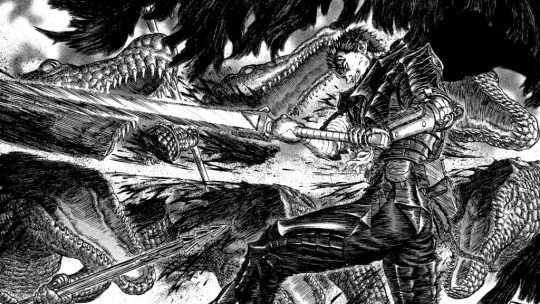
I chose this specifically because Berserk has an amazing story and the design elements in creating this piece shows a progressive time compared to Japan’s historical art. Manga is quite popular and often underappreciated. On page 60, Art Nouveau: A New Style for a New Culture – there is a Japanese illustration shown in figure 2.5 titled, “Kitagawa Utamaro” which has a young woman with black teeth examining her face. “Stylistically speaking, the bold passages of flat color arranged in asymmetrical compositions, which lack any three-deimensional perspective spaces, combined with fresh, crisp linear elements, were all adopted by European graphic designers. Japanese artists rendered the figure – relying on black contour lines, which they combined with short, fluid strokes to produce details in the face.”
2. Cameras
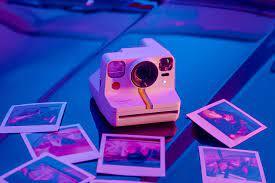
“In order to meet demand, new technologies such as steam-powered presses, mechanized letterpress, lithography, and chromolithography enhanced the range of philosophies for the mass production of printed materials. Photography, perhaps the most significant invention of the century for graphic design, gradually made inroads during this period. [31 Elkison]”. On page 32, the book introduces the concept of “Photography.” Which is considered an important technological development. And it is simply regarded as “the ability to catch light”. Cameras make it possible to capture moments and cement memories and events into pictures. Phones have built in cameras and it allows you to capture images. We also have filters, allowing for us to alter color, tone, shapes, and such.
3. Posters
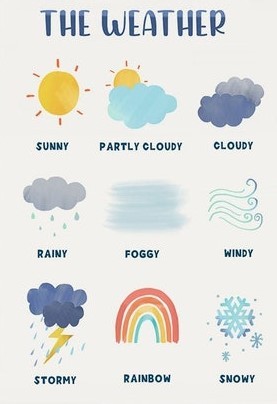
“Mass-market Advertising: The Broadsheet and the Poster”, page 41 -47 covers the topic of posters. Aside from printmaking and newspapers, posters became another form of communication. It tied together many social aspects, including politics and propaganda. Posters can be seen with creative fonts and illustrations to highlight points the author/artist is trying to create. This one above is a poster for kindergarten students learning about weather. Bold fonts, color, and pictures all help to create a visual impact.
4. Typewriting & Competition
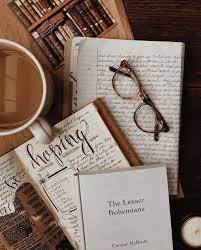
Page 49 goes into further detail of how fonts came to be and the changes of lettering which used to be the standard. “Designed by Morris Fuller Benton (1872-1948), Franklin Gothic, was produced to meet the high demand for sans serif faces, as opposed to traditional serif types such as Garamond Classic.” Today, we have a variety of fonts. Given the internet, it is possible to download different fonts that suit your tastes. Google has plenty programmed.
5. Arts & Crafts Movement
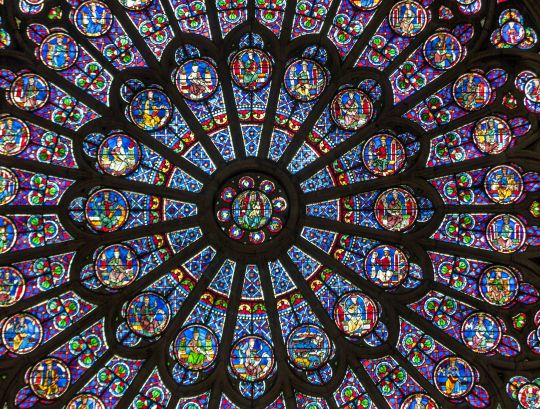
https://www.bbc.com/culture/article/20140630-the-10-best-stained-glass-windows
Picture: Chartres Cathedral, early 13th Century
“Demand for stained glass reached its height in the late Middle Ages. The cathedral at Chartres, France, features sturdy flying buttresses that allow for huge windows, including the glorious rose window detailing the birth of Christ. The density of the composition bathes the interior of the cathedral in a deep, colorful glow.”
“[Morris’s firm, Morris & Co., found its greatest success in the manufacture of stained glass in the 1860s] (50 Elkinson)”. Stained glass shows elements of design by using “geometrically structured, decorative art objects and architecture from the late nineteenth century.”
6. William Morris’s Kelmscott Press
Pg 51-53
Image: A stack of sketchbooks

“In parallel to his work in other decorative arts, Morris reacted to the poor design of contemporary mass-produced books by establishing a press produced limited-run editions featuring handmade paper and expertly tooled leather covers.” Typography and book design was influenced by Morris. Other than paperback, there are hardcovers, leatherbound, and numerous techniques to bookbinding. To avoid mass production, technology made it possible to have e-books. And you can access it from any device.
7. Video Games
Image: Assassin’s Creed Origins
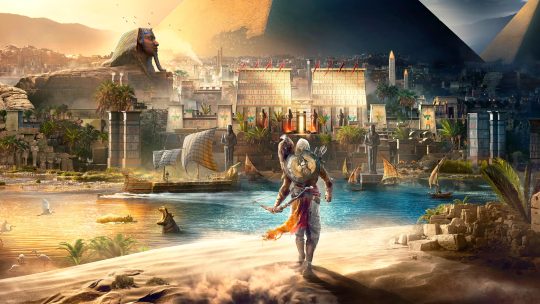
Video games show many elements of design. I no longer have my files of Assassin’s Creed Origins but I do remember being in awe with the graphics. There are plenty of other video games that have high quality visual aspects but I added this because this is from a series I enjoy. The colors have such an important impact and really pulls in your attention.
8. Digital Art

9. Company Branding

For this particular image, I wanted to show the branding of Coca Cola. Pre-covid, I went to the World of Coca Cola in Atlanta, Georgia with my pre-college program Upward Bound. Looking through all the images that I took, it was interesting to see the history of Coca Cola and how much the design has changed (however, it is still recognizable). The older stuff is considered vintage and nostalgic to older people. Relevant to branding, logos and advertisement have gone through significant changes over time.
10. Fashion Trends
https://www.vogue.com/fashion/trends
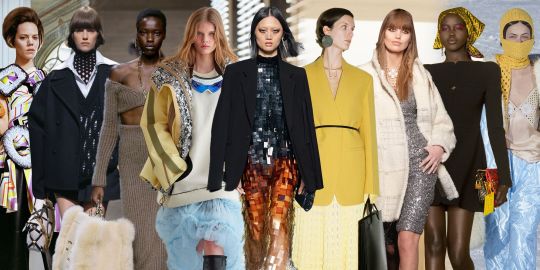
Clothing certainly has changed over the years. With the help of social media, there’s an influx of trends. Especially among teenagers. My style is influenced by my parents and the stuff that I like. In a way, clothing is timeless and I’ve learned that even when things are “out of trend”, it’ll come back in a decade or so. For example, I’ve always worn baggy jeans and to see it trending now makes me laugh. Especially since it is something that got odd looks when skinny jeans were the “it” of time.
11. Modern Homes
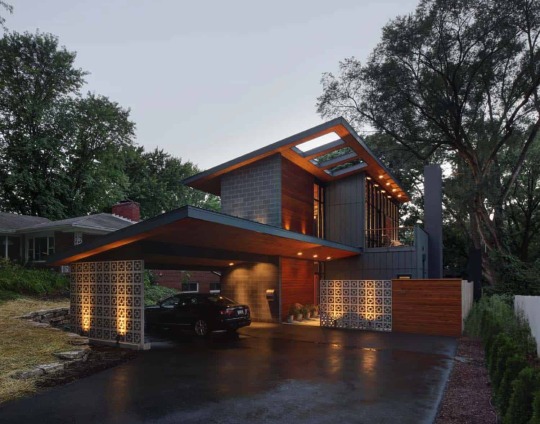
Lastly, this is a modern home in Wisconsin. I searched up modern homes in the state that I live in because I’m curious and all I’ve ever known are the houses in my neighborhood. One-two story homes and nothing like the picture above. Architecture, “the art and technique of designing and building, as distinguished from the skills associated with construction.”
1 note
·
View note
Text
Week 2 – Design Thinking After reading “Design Thinking”
February 3, 2022
Prompt: After reading “Design Thinking” in the Harvard Business Review, how would you define design? Can you give me a few examples (cited) of design thinking in products you use? Expand on what you found to be the most significant concept from this weeks reading.
What is design? Design means the visible form or structure produced by someone’s creativity, adaptiveness, innovation, and integrative thinking. Some examples of design thinking in products that are used by people would be: electric toothbrush, UberEats, Airbnb, Bank of America, etc.
https://theaccidentaldesignthinker.com/2017/09/16/40-design-thinking-success-stories/
I have used Doordash, and have purchased some Nike shoes. Nike does have a reputation for designs and innovations. (NikeFlyease for example).
Significant Concepts
The DesignThinking.pdf linked on canvas depicts the personality of a Design Thinker’s personality profile on the fourth page.
DESIGN THINKER’S PERSONALITY PROFILE
Empathy: imagine the world from multiple perspectives – those of colleagues, clients, end users, and customers (current and prospective). “By taking a “people first” approach, design thinkers can imagine solutions that are inherently desirable and meet explicit or latent needs.”
Integrative thinking: rely on analytical processes (those that produce either/or choices) and exhibit the ability to see all of the salient
“sometimes contradictory – aspects of a confounding problem and create novel solutions that go beyond and dramatically improve on existing alternatives.”
Optimism: They assume that no matter how challenging the constraints of a given problem, at least one potential solution is better than the existing alternatives. Experimentalism. Pose questions and explore constraints in creative ways.
Collaboration: “The increasing complexity of products, services, and experiences has replaced the myth of the lone creative genius with the reality of the enthusiastic interdisciplinary collaborator.” May typically see people who are engineers and marketers, anthropologists and industrial designers, architects and psychologists.
STEPS OF DESIGN THINKING
1. Inspiration - Expect success, build implementation resources into your plan, identify the business problem, opportunity, and look for changes. Observe the world, what people do, what they need, what they want. Incorporate disciplines such as engineering and marketing. In the end, all your information should be organized with synthesized possibilities.
2. Ideation - Brainstorming, create multiple sketches, build creative frameworks, apply integrative thinking, think of the customers and their purpose in the project, prototype - test (repeat), communicate internally, prototype some more and test internally. The execution follows next.
3. Implementation - Execute the vision, help marketing design a communication strategy, make the case to the business by spreading the word, and move on to the next project before repeating the cycle.
https://careerfoundry.com/en/blog/ux-design/design-thinking-examples/
This source lists 5 steps of the design thinking process -- empathize, define, ideate, prototype, and test.
How to Make Design Thinking Part of the Innovation Drill
STEPS
Begin at the beginning.
Take a human-centered approach.
Try early and often.
Seek outside help.
Blend big and small projects.
Budget to the pace of innovation.
Find talent any way you can.
Design for the cycle.
0 notes
Text
Week 1 - About Me
January 24, 2022
1. Tell us all a little about yourself.
Hello! My name is Phomany Chanhdara. My pronouns are she/her. I like to draw, paint, read, play video games, and recently got into fitness. I mostly stick with watercolors, inking, and sketching (graphite & charcoal). I have some experience with digital art but I haven't done it for a while. As for video games, I'm a fan of Uncharted, Assassins Creed, Final Fantasy, Kingdom Hearts, Resident Evil, and Genshin Impact. To kill some time, I play Minecraft with a couple of my friends. I do home workouts too, and it's mostly weights, HIIT, cardio, and a bit of yoga. During my downtime, I watch a ton of Netflix. I mostly stick to crime, gore, horror, comedy, and action. I also watch anime (One Piece, Jujutsu Kaisen, JJBA, Demon Slayer, etc.) and k-dramas. For other random things, I never finish my sketchbooks so there's that.
2. Why did you take this class and what is your interest in design? Do you have any relevant experience.
Because of my background with creating art for nearly a decade (this could be considered relevant experience), I was pretty much drawn to design. I wanted to understand more in-depth concepts of art and improve on my creativity. This class also ties into my interests in graphic design which is something I’m interested in minoring in.
3. What inspires you?
What inspires me is my future. It’s kind of a blank canvas yet also unpredictable. Especially if you’re someone like me who sometimes has no idea what they’re doing will lead to something either great or horrible. Despite the future being uncertain, I’m looking forward to it.
4. Have you recently purchased any items where design was a deciding factor over a competitor?
Not really, I tend to weigh the cost/expenses even if the designs were the first thing that caught my eye. Sometimes I fall into the trap and buy something pretty even if I might not use it often.
1 note
·
View note